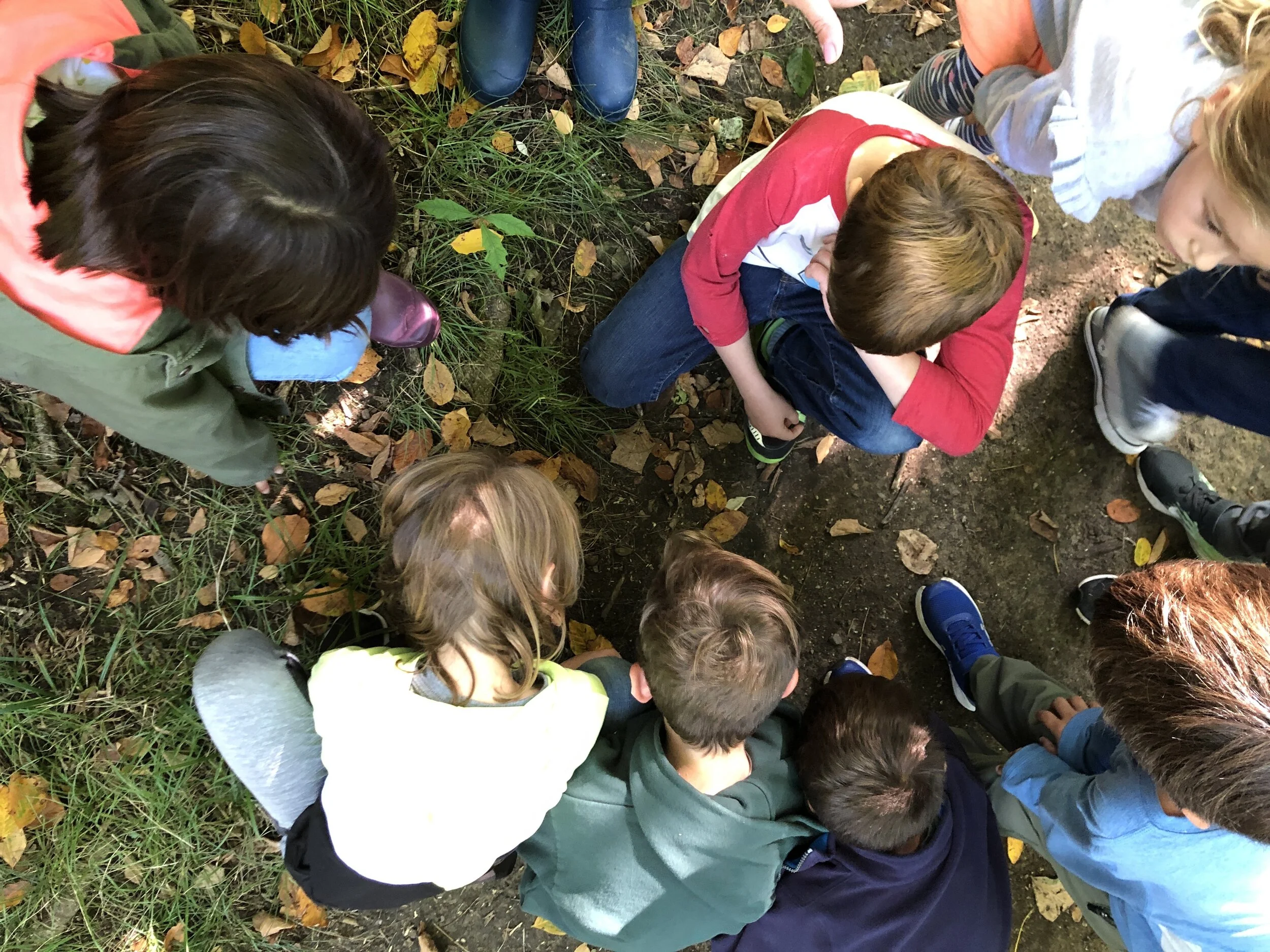Where do I live?
An exploration of habitat and home in the natural environment, the local community, and historically.
Our Curriculum
+ Science + Social Studies
Second graders begin the year investigating the natural environment, learning, for example, how local plants and animals attain their basic needs. Focusing on the temperate forest, students learn about the New England climate and how human and animal life adapts to survive in this environment. They move on to explore their own neighborhoods and houses and consider how buildings provide shelter. They discuss the features of and differences among houses around the world and how climate influences the way a house is built. As part of their cartography study, in our “Wabi-Sabi” makerspace, second graders program Bee-Bots to navigate 3-D town models.
Second graders learn about the colonists, who inhabited the North Shore before them, how they struggled to survive in their new environment and interacted with the Native Americans they met. They learn about the migration of their own ancestors to North America. Finally, the students travel back to the formation of the earth and consider how the earth’s gradual changes have supported new life forms. They learn how scientists have used a variety of discoveries to piece together the puzzle of prehistoric life. The students use books, videos, discussions, museum visits, visiting experts, projects, and scientific techniques to learn about their surroundings. They demonstrate their new knowledge through writing, drawing, model building, and a wide variety of other activities.
+ Language Arts
Second graders participate in a balanced language arts program of reading and writing workshops throughout the year. We introduce and practice skills that help students develop into thoughtful and engaged readers and writers. In addition to comprehension strategies, students engage in phonetics exercises, fluency practice, and vocabulary development. Students learn in small groups, one-on-one with teachers, and from each other when they partner for reading practice. Students practice writing skills in narrative, informational, and opinion forms. They learn to communicate ideas in their writing, revise their work, edit for publishing, and present their work with confidence.
+ Mathematics
Second graders build their foundational understanding of such key math concepts as number families, equations, and place value. They work to attain fluent knowledge of basic addition and subtraction facts so they can compute larger numbers with greater ease. Second grade marks the children’s first formal introduction to multiplication as well as to adding and subtracting two- and three-digit numbers with regrouping. The children use Cuisenaire rods, number lines, hundreds charts, and other tools to build their mathematical understanding. They also practice clearly communicating their thinking.
+ Social/Emotional
Twice a week we engage the second graders in a lesson from our Open Circle social/emotional curriculum. We gather in an open circle—open because we include one extra space to underscore that there is always room for another voice and no one is ever left out—for a short lesson and conversation and a story or an activity. As an example, in the Managing Ourselves unit students learn about what happens in their body and their brain when they get upset, and they practice calm-breathing techniques. They consider strategies for listening well to others and read The Blabber Report, by True Kelley. They talk about times when it might be helpful to talk to someone who can help.
+ Spanish
Most students enter the second grade clase de español with two years experience greeting others and naming the world around them in Spanish. In second grade, they will be asked to push their skills further. They will speak in short, simple sentences and be expected to read gestures and hear cognates to solve unknown words. They also will begin reading and writing simple sentences, and learn how to pronounce Spanish vowels. By the end of second grade, students should be able to form full sentence answers most of the time to questions on known topics. They should be able to discuss with some fluency how they’re feeling, what they are like, who they live with, weather, and characteristics of trees and birds.
+ Visual Arts
Second grade art emphasizes the elements of art and the principles of design. The children are introduced to the work of famous artists of the past and present. Art projects that are tied to the theme of “Where Do I Live?” include a class mural that is a map of houses around the world, created with watercolors and markers; oil pastel and watercolor paintings of trees on school grounds that students first sketch while outside; and oil pastel and watercolor paintings of houses of the world done from photographs. Place-based projects include making Native American corn husk dolls and sculpting and painting birds of New England from paper maché and tempera.
+ Music
In music class at GUS, second graders: continue to develop their voices through vocal exploration and pitch-matching activities; read and perform tonal patterns based on do-re-mi (the first three pitches of the major scale); build a repertoire of songs related to place, as well as folk songs, rhymes, singing games, and seasonal and community songs; sing independently through the frequent singing of round; read and perform duple and triple rhythm patterns; perform rhythms independently in multi-part instrument ensembles; listen to and learn about the instruments of the orchestra through Prokofiev’s Peter and the Wolf, and through attendance at a Cape Ann Symphony concert.
The “Where Do I Live” theme is expressed through the study of anthems of place, including the national anthem, the state song, the school song, and an original class song.
Second graders perform in all-school Grand Friends’ Day, Solstice, and May Day celebrations. In addition, the class performs anthems of place during a culminating “Heritage Day” class presentation.
+ Dance
In dance class, students create, express, communicate, and secure confidence through the study of movement. They participate in exercises that foster creativity, challenge them physically and expressively, require teamwork, develop identity, promote problem solving, and require that they describe their creative process. Children gain body awareness, coordination, locomotor skills, musicality, and choreography techniques through formal and improvisational modern dance lessons.
Sgraders learn about balance, off-balance, and counter-balance, finding examples of these conditions in the world around them. Then, working with a partner, they incorporate balance and counter-balance into a choreography project.
+ Physical Education
Second graders continue to engage in games that emphasize movement (running, skipping, hopping, leaping, and so on) and cooperation. Occasionally, students are given free time to choose their own group activities, so they can practice problem-solving and conflict resolution. The goal remains to encourage healthy habits of physical activity and strong motor skills. Everyone participates in all games and activities. While many children at this age have already begun playing competitive town sports, we create a non-competitive environment in the lower school community to cultivate good sportsmanship as the children mature.
+ Community Service
For their community service activity, twice a year second graders collect food for the Beverly Bootstraps food pantry. They create posters, announce their food drives at all-school meetings, and organize the donations for delivery.

